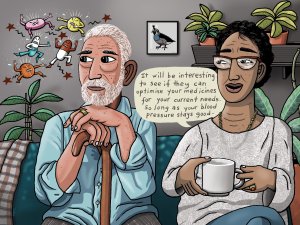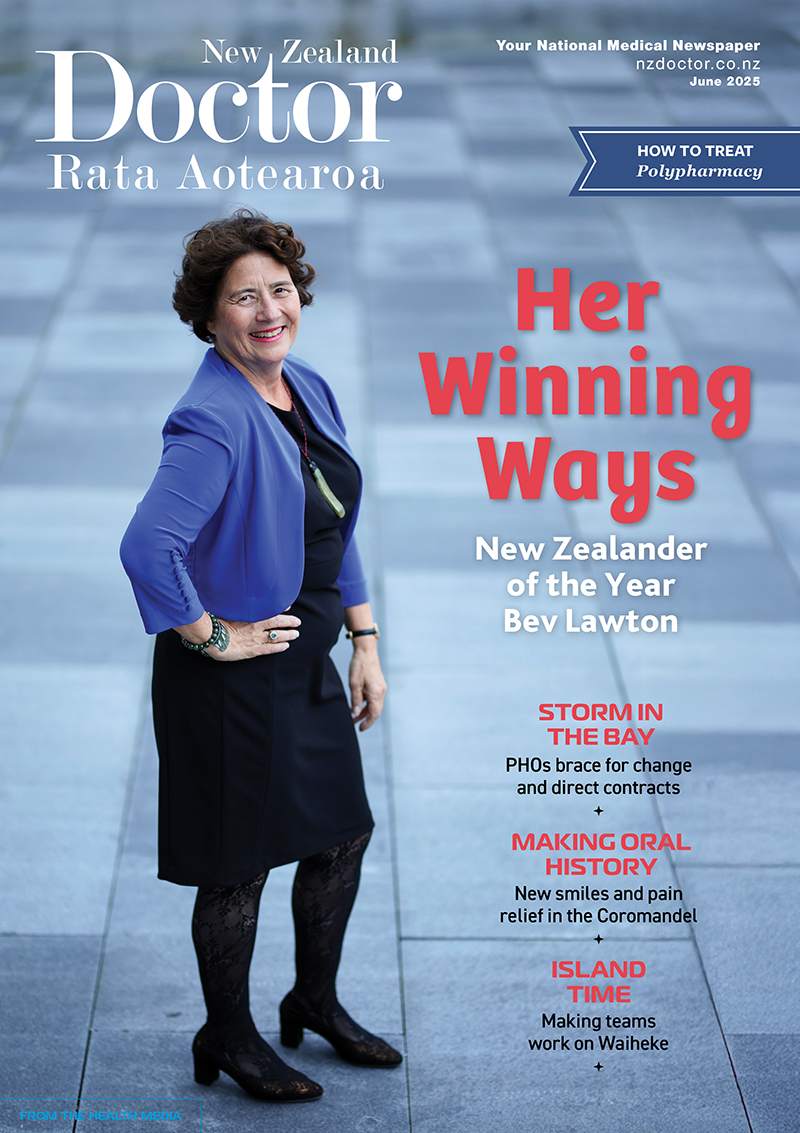For older people and frail people, the long-term benefit of medicines reduces and the potential for harm from adverse effects increases. When the benefit–risk balance changes in this way, medicine review and optimisation are important to simplify the therapeutic regimen, reduce inappropriate medicines and minimise risks. In this article, pharmacist prescriber Linda Bryant uses two case studies to illustrate important considerations during medicine reviews
No pregnancy warning labels on alcohol
No pregnancy warning labels on alcohol

- 34% of alcohol products have no pregnancy warning label, shows new report.
- 16% of alcohol products with the correct label have it hidden on the bottom of the packaging where it is less likely to be seen.
Every baby deserves the best possible start in life. But new report by Alcohol Healthwatch of New Zealand’s first audit of pregnancy warning labels on alcohol products, suggests that the low presence of correct labelling might be undermining this.
The report has some worrying findings, chief among them that over a third of alcohol products still do not have the correct pregnancy warning label. Just under half (44%) of the 400+ products audited either had no label, or had the label hidden on the bottom of the packaging.
The Government-mandated pregnancy warning label became compulsory from August 2023, following over twenty-years of advocacy by public health professionals and communities. Pregnancy warning labels are an important tool to share the information that no amount of alcohol is safe to consume when pregnant. Exposure of alcohol in-utero can lead to fetal alcohol spectrum disorder (FASD), a lifelong disability characterised by cognitive, emotional, and functional deficits. FASD comprises over half of the estimated $9.1 billion dollars in alcohol harm felt in New Zealand annually.
"Communities have been fighting for a pregnancy warning label for twenty years," says Sarah Sneyd, lead study author and Senior Health Promotion Advisor at Alcohol Healthwatch. "People tell us all the time that if they pick up a bottle of wine, they expect that it will have the pregnancy warning label on it. But what we’ve found is that even a year after being mandatory, there’s a good chance it won’t have the message."
Spirits was the least likely to have the pregnancy warning label on it, with only 48% of spirits audited showing the warning label. This is likely due to its longer shelf life, as the law only states that alcohol manufactured from 31 July 2023 is required to have a warning label, not all alcohol sold. Wine was the next least likely to show the label, with only 57% showing the warning label.
"Spirits are some of the strongest alcohol you can buy, and wine is very popular among women," says Sneyd. "And they’re the least likely to show a pregnancy warning label! It’s just not good enough - this is a massive loophole that needs to be closed."
There is no requirement for any other health or warning label on alcohol products, such as the fact that it causes cancer.
Furthermore, unlike almost every other consumable food or drink item, alcohol products (apart from RTDs) do not have to provide an ingredient list. Like Big Tobacco tactics, Big Alcohol has an incentive to delay or sidestep labelling requirements for as long as possible, to protect profit margins at the expense of health.
However, the audit revealed much higher rates of industry-designed labels, with 78% of products having an industry-designed label, including urges to "drink responsibly". Often this messaging was located next to or near the pregnancy warning label, and may confuse viewers. This highlights the urgent need for a range of rotating health warnings to meet consumer rights for information. These labels must be prominent (i.e. not located at the bottom of packaging).
Sneyd believes that in order for consumers to make informed decisions, they need the information. "We’re talking about preventing babies being born with brain damage; it goes without saying that this is an important message. If we can get communities the information they are entitled to, then we’re one step closer towards every baby having the best possible start in life."



